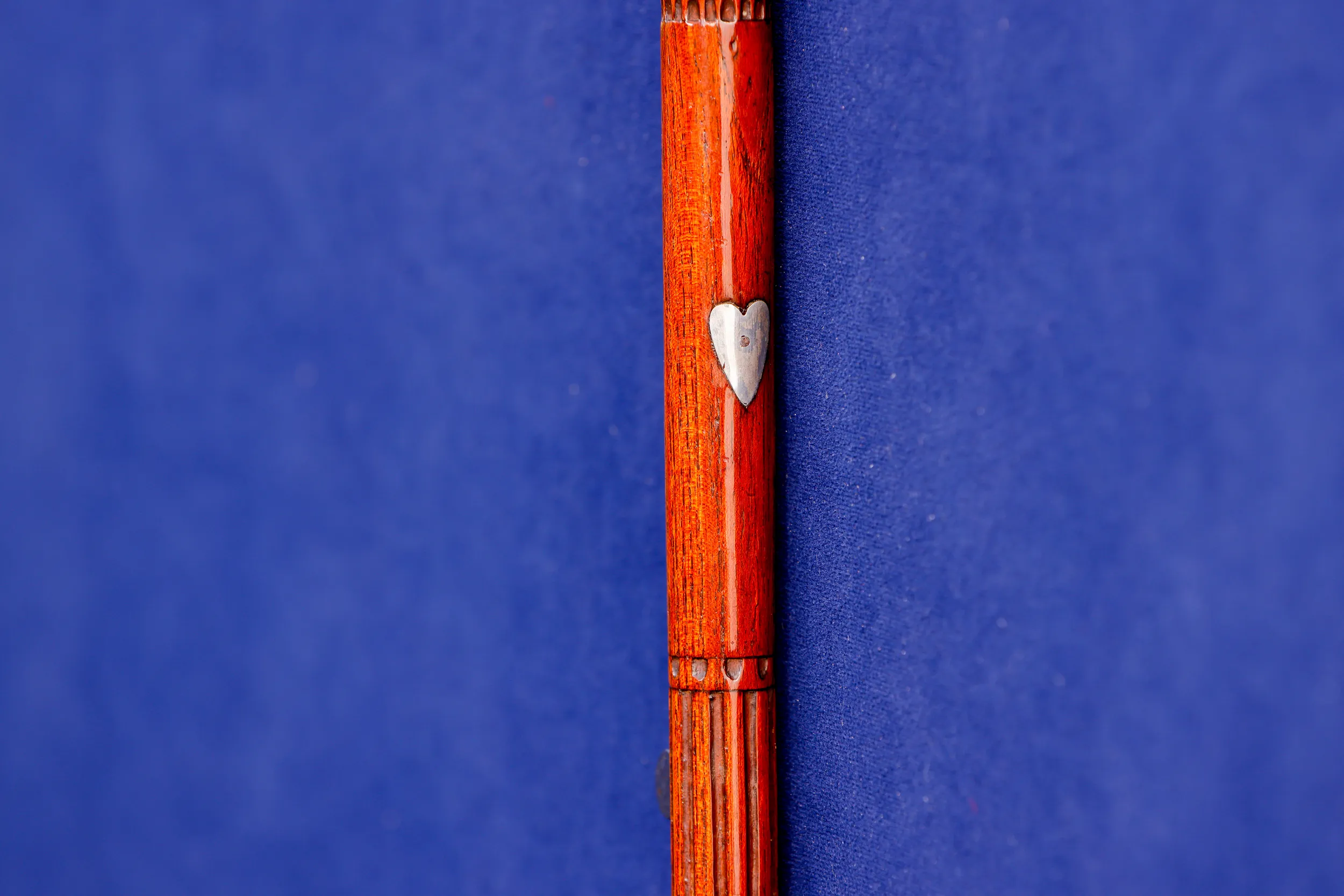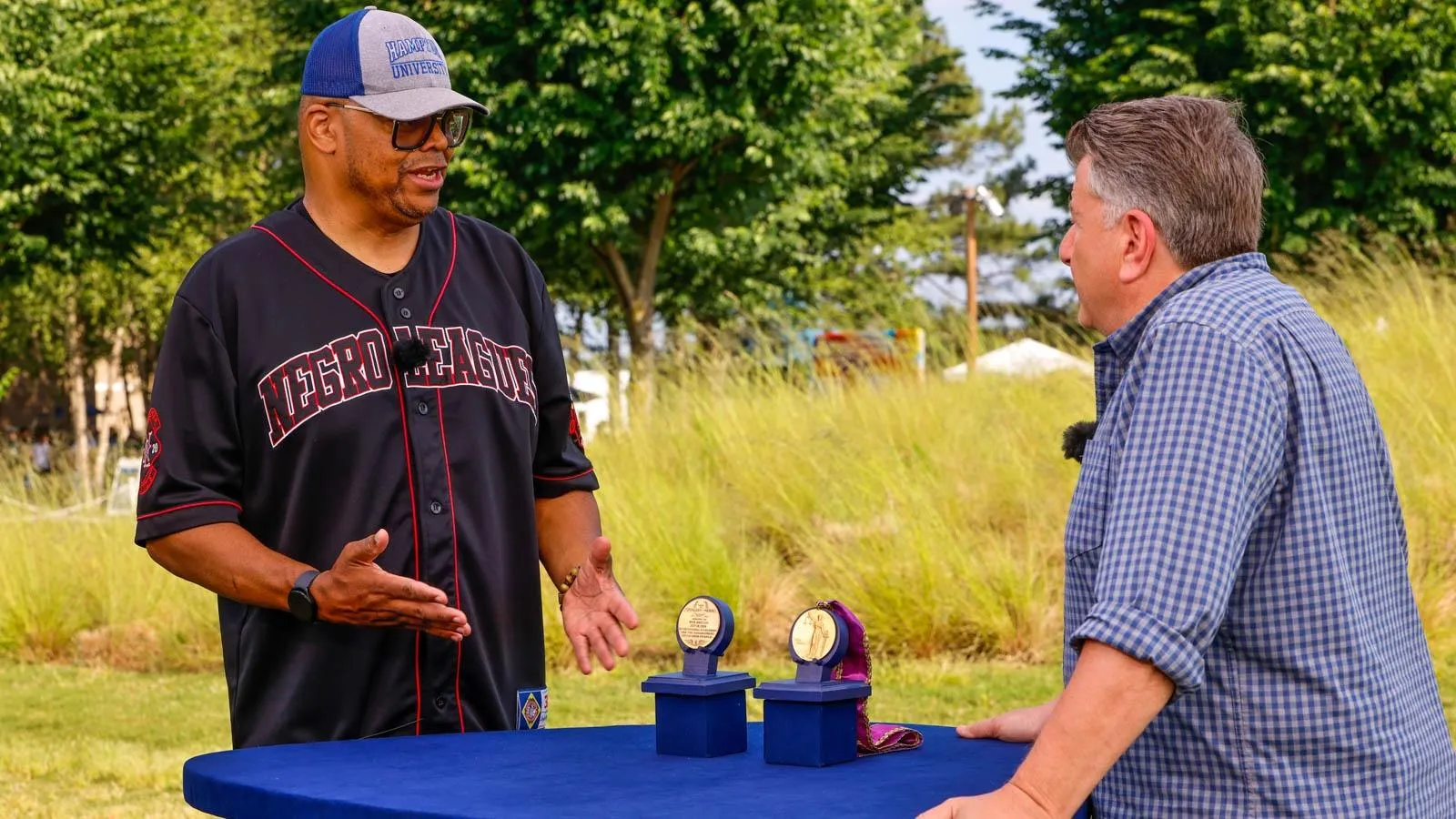GUEST: Well, my great-uncle acquired this cane somewhere around 1900. And he said it came from the World's Fair in St. Louis, Missouri.
APPRAISER: Well, the World's Fair in St. Louis was in 1904. It's a lot older than that.
GUEST: Oh, really?
APPRAISER: It's a cane that I suspect is probably from the late 1790s to 1820.
GUEST: Well, that's a whole lot older than I thought it was.
APPRAISER: And I say that because of the way it's constructed. If you look at this hole here...
GUEST: Mm-hmm.
APPRAISER: ...that goes through on both sides, that's for a wrist strap.
GUEST: I figured it was, yeah.
APPRAISER: The wrist strap was to keep this on your wrist, particularly when you're walking in a, sort of a muddy street, so that it didn't slip out of your hand.
GUEST: Mm-hmm.
APPRAISER: So this hole here, that's the first clue that it is an old cane. Secondly, this part, called the ferrule, is fairly long. And as canes became more popular in the 19th century, that ferrule became shorter, again, in particular after streets started to be paved with macadam. You didn't need a long ferrule...
GUEST: Mm-hmm.
APPRAISER: ...to keep the tip of the cane out of the mud, 'cause there was no mud anymore.
GUEST: Oh, wow.
APPRAISER: So the ferrule was meant to protect the shaft. Now, what is really interesting to me about this cane are these silver inlays, and they're all over it, including up here on the head of this great eagle. These are the kind of inlays that a gunsmith used on long rifles.
GUEST: Oh, man.
APPRAISER: So my guess is that a gunsmith made this cane for somebody of importance.
GUEST: Well, that's great.
APPRAISER: It's got this fabulous engraved pommel on the cane with an eagle and a patriotic shield. And then it has this wire inlay, uh, around the eyes, which is, um, uh, uh, very typical of what gunsmiths would do. This is probably, um, walrus ivory. This, the ferrule, is bone.
GUEST: Oh, okay.
APPRAISER: So, for the time this was made, this is a really fancy cane. A really fancy cane.
GUEST: I've never seen another one like it.
APPRAISER: Yeah. I would think that at an auction today, this cane might bring $2,500 to $3,500.
GUEST: Oh, that's great.
APPRAISER: It is such an incredibly fancy cane.
GUEST: Well, I really appreciate it. Thank you so much.
APPRAISER: You bet. Ten years ago, the cane might have been worth twice what I told you, so...
GUEST: Oh.
APPRAISER: $4,000 to $6,000...
GUEST: Yeah.
APPRAISER: ...$5,000 to $7,000.
GUEST: Yeah.





